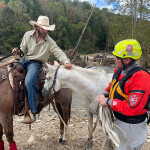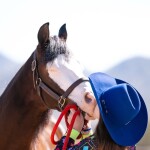If you've spent time around horses, you've likely witnessed one of the quirks that make them so fascinating—the moment they curl back their upper lip, revealing their teeth. So what is the meaning behind a horse showing its teeth?
For horse owners, equestrians, and animal behavior enthusiasts, this behavior might spark curiosity or even concern. Why do they do it? Are they angry? Amused? The answer often lies in understanding the context and the subtleties of equine behavior.
Let's take a closer look at why horses show their teeth and what this behavior really means.
Table of contents [Show]
The Flehmen Response: A Closer Look
The most common reason horses display their teeth is through a behavior called the Flehmen response. You may have seen a horse lift its head, curl back its lip, and inhale deeply. It’s not aggression or amusement—it’s a sensory action to enhance their sense of smell.
Horses have an organ called the vomeronasal organ (or Jacobson's organ) located in their nasal cavity. This organ helps them detect pheromones and other scents, often related to reproduction or environmental changes. By curling their lips back, they allow these scents to enter the organ more easily, helping them interpret the world in greater detail.
When Does the Flehmen Response Occur?
- New Scents: When a horse detects a new or unfamiliar smell, such as another animal or a chemical scent.
- Mares in Heat: Stallions often display the Flehmen response when determining if a mare is in heat.
- Curiosity: Horses are naturally inquisitive and might use this response to decode unfamiliar objects or scents.
The Flehmen response is entirely natural and non-aggressive. If you see your horse doing this, they’re simply "sniffing smarter."
Other Reasons Horses Show Their Teeth
While the Flehmen response is the most common explanation, there are other reasons why a horse might display its teeth. Here's a breakdown of some of the key possibilities:
High-ranking horses in a herd may show their teeth to assert dominance over other horses. This display can be part of a broader communication style within the herd hierarchy. It’s often accompanied by a confident stance, direct gaze, and forward-facing ears.
2. Submission or Appeasement
Interestingly, showing teeth doesn’t always signify power; sometimes, it’s the opposite. Subordinate horses may display their teeth slightly to signal submission to a more dominant horse. They might lower their head and ears as well, conveying, “I understand you’re in charge.”
3. Warning or Threat
When a horse feels threatened, the situation changes. A teeth-bearing horse in this context is giving a warning—“Back off!” This behavior usually comes with other aggressive signals, such as pinned ears, a tense body, or a raised tail. Paying attention to these cues is vital to understanding the message your horse is trying to convey.
4. Pain or Discomfort
Sometimes, a horse showing its teeth can indicate physical discomfort. Dental issues, such as sharp teeth, ulcers, or infections, might cause this behavior. Or, they may attempt to chew their lips or display unusual jaw movements. If you notice repetitive or unusual teeth displays, it’s worth having a vet or equine dentist evaluate them for potential issues.
Deciphering the Context
When interpreting a horse’s tooth display, context is everything. Simply put, no two situations are the same, and observing the horse’s overall body language is critical to understanding their expression.
Key Body Language Cues to Consider:
- Posture: Is the horse standing tall, or are they backing away? A dominant or threatened horse will hold a strong, forward stance.
- Ears: Forward-facing ears often signal curiosity, while pinned ears convey aggression or discomfort.
- Eyes: A calm, soft gaze indicates relaxation, while wide eyes may point to fear or tension.
- Tail Position: A swishing or raised tail may indicate irritation or excitement, while a relaxed tail points to calmness.
By combining what you see in their teeth display with these signals, you can piece together a fuller picture of what your horse is trying to tell you.
What Can Horse Owners Do?
Understanding equine behavior is critical for building a strong, empathetic relationship with your horse. Here are a few tips to deepen your connection and communicate effectively when your horse displays their teeth:
- Watch and Learn: Spend time observing your horse’s body language in different settings. Learning their unique quirks can help you pick up on subtle changes.
- Rule Out Pain: If you suspect dental issues might be causing unusual behavior, schedule a vet check-up. Healthy teeth are a must for a happy horse!
- Respect the Herd Dynamic: If you have multiple horses, recognize the social interactions at play. Giving them space to sort out dominance and submission within a herd is essential.
- Stay Safe: If a horse shows their teeth in an aggressive or warning context, step back and evaluate. Always prioritize safety for both you and your horse.
Horses are incredible, sentient beings with deep emotional and social intelligence. When they show their teeth, they’re not just displaying physical features—they’re communicating in a way that connects with their instincts, environment, and even you.
Whether it’s the fascinating Flehmen response, a dominance display, or a signal of discomfort, every gesture tells a story. And as an equestrian, horse owner, or simply a lover of animal behavior, your role is to listen, interpret, and respond with empathy.
Want to deepen your knowledge of horse behavior? Join our Subscriber Community , where experienced riders, trainers, and enthusiasts share insights, stories, and practical advice to help you better understand your horse. Together, we’ll strengthen the bond that makes this partnership so special.
Now, what’s your horse’s favorite way to communicate?









